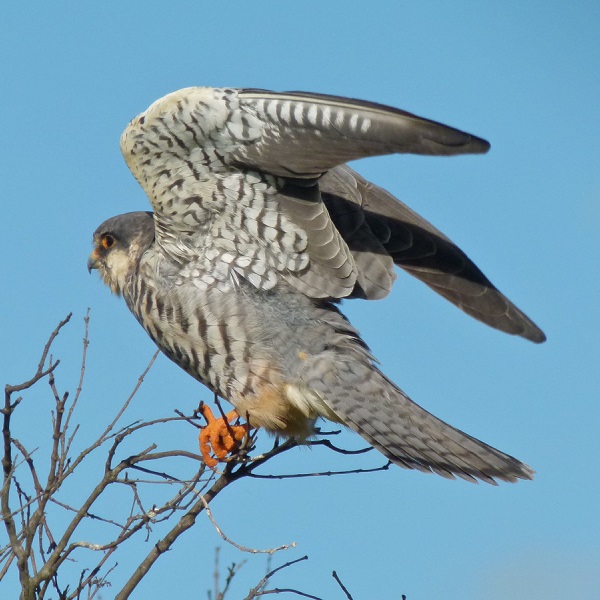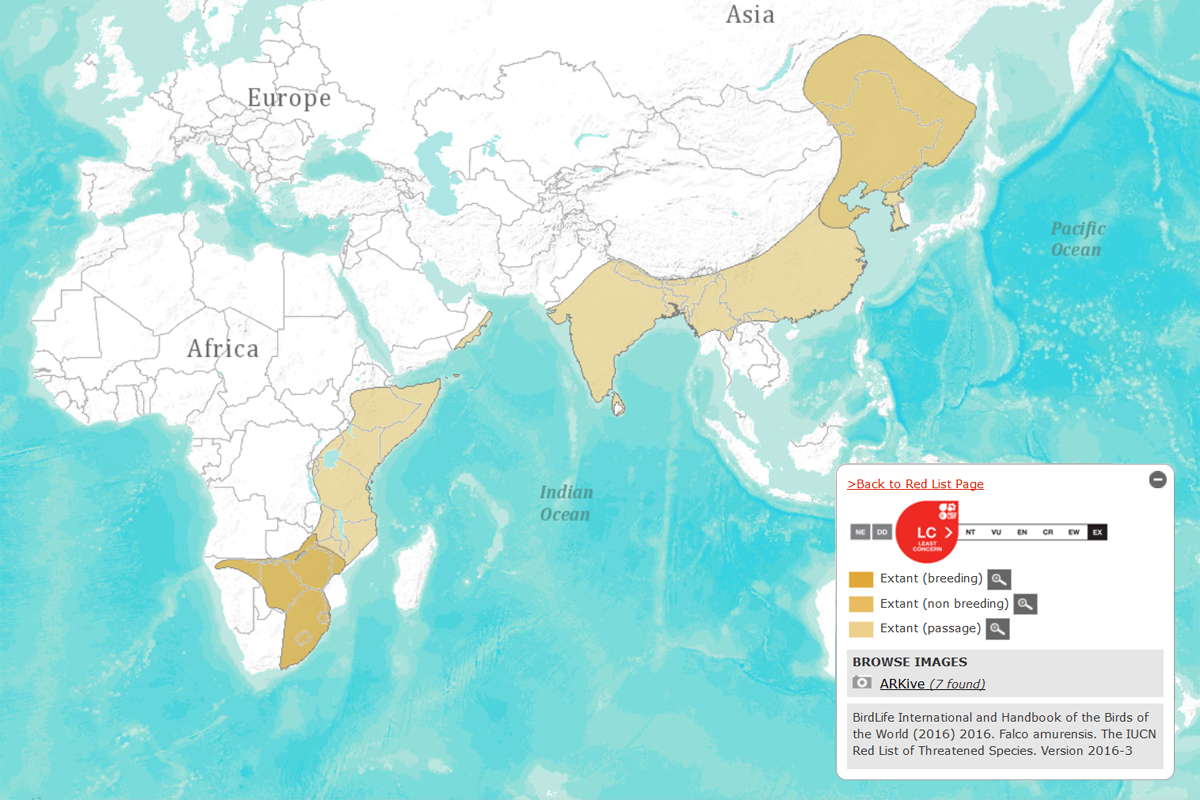You are here
Amur Falcon

Creative Commons photo by Bernard DUPONT
The Amur Falcon is a fascinating migratory raptor. Every year, the small, resilient birds make the daring voyage from breeding grounds in Russia and China to winter in southern Africa. It is supposed that the falcons cross the Arabian Sea during their migration, but much is still unknown about the patterns of their estimated 22,000 km migration.
Because of the long journey, stopover sites are important for Amur Falcons to maintain stamina. In 2012 an estimated 120,000 to 140,000 birds were trapped in nets and killed while passing through a remote part of the Indian Nagaland region. This prompted a swift response from the Indian Government and the Nagaland Forest Department, which used patrols and education initiatives for villagers as a means to halt trapping. In 2013, no falcons were trapped.
The Amur Falcon exemplifies the threat of illegal trapping and killing during migration, which harms countless bird species each year. Besides this, the birds are prone to habitat loss from agricultural practices and land reclamation. Only international cooperation from organizations and governments working together will help preserve these species as they become increasingly vulnerable.
Scientific Name
- Falco amurensis
Quick Facts
- Breeds in South-east Russia and northern China.
- Migrates west through India and across the Arabian Sea to Southern Africa
- Feeds on dragonflies that follow a similar migration path over Arabian Sea.
- 22,000 km journey (longest sea crossing of any raptor)
- Flyway: East-Asian Australasian and African Eurasian
- Population of more than 1,000,000 breeding individuals
IUCN Red List Status
Main Threats
- Over harvesting from trapping
- Habitat loss from grassland degradation
Flyways

Map courtesy of IUCN, BirdLife International and the Handbook of Birds of the World 2016
